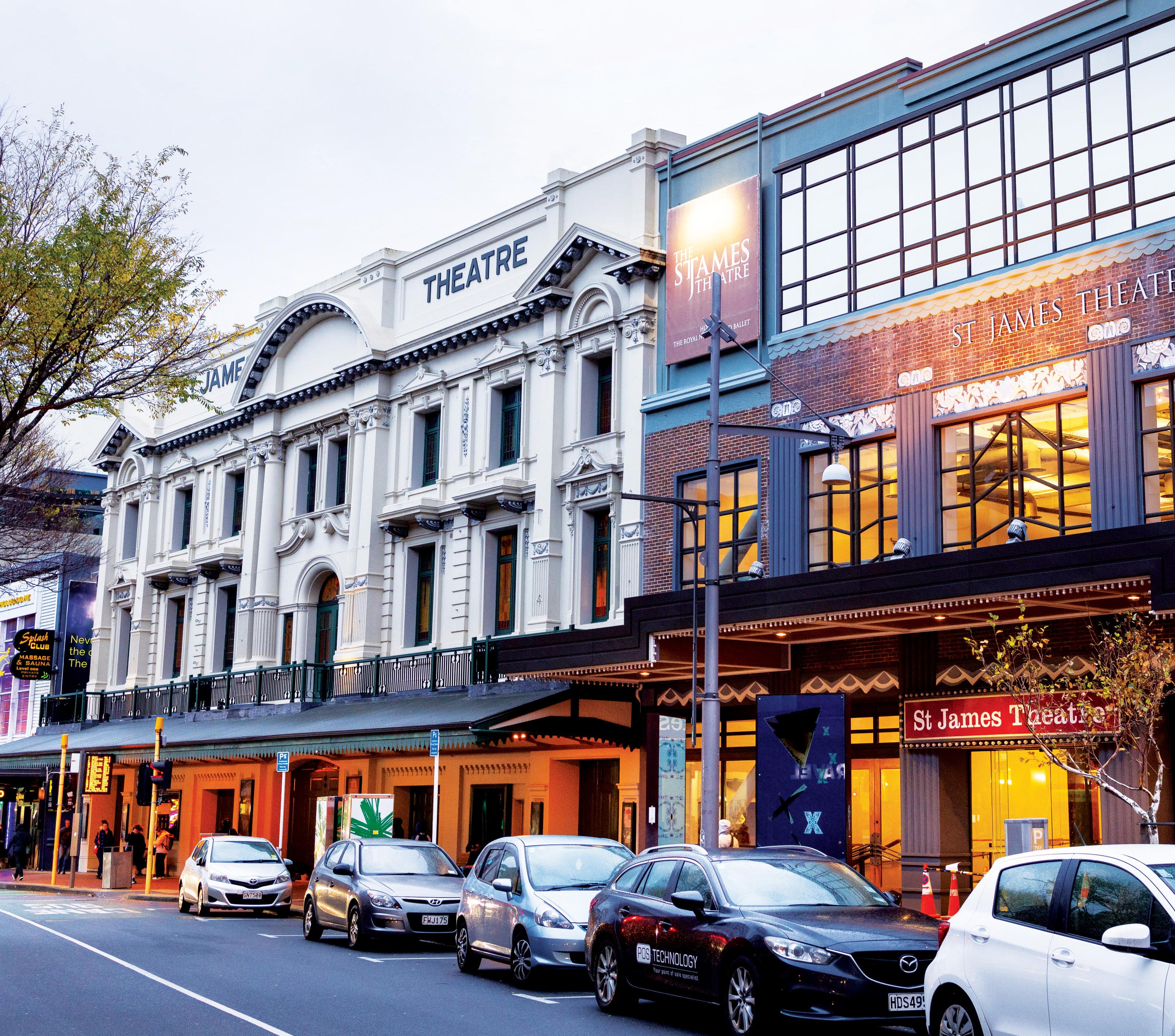
4 minute read
EN POINTE
It’s always a challenge to refurbish a landmark, especially one as beloved as Te Whanganui-a-Tara Wellington’s 1912 St James Theatre and Ballet Building. So, when it came to earthquake strengthening and upgrading the Category 1 heritage-listed structure, a good deal of care, skill and outside-the-box thinking was called for.
It also required engineers Beca and construction company Maycroft Construction to work collaboratively and nimbly to deal with a long list of unwelcome surprises. One example: it took 18 months to handremove concrete that had been poured between the Ballet Building and adjacent properties during the previous retrofit in the 1990s.
These and other unforeseen hurdles needed to be overcome while preserving and restoring the myriad heritage features — having a grade 1 listing meant there could be no change to the appearance of the building.
The time and effort were worth every minute and every cent; the theatre reopened in June 2022 to critical acclaim.
While strengthening work was in progress, original black and white floor tiles were meticulously lifted, numbered, cleaned and restored before they were relaid. Heritage restoration specialists also climbed onto scaffolding erected for the structural and lighting upgrades to carefully work on ceiling mouldings and hand-painted features. All 1553 theatre seats were reupholstered.
Attention to detail was scrupulous and, in one case, involved some detective work. A heritage Sunburst chandelier that had been removed in the 1990s was tracked down to a second-hand shop.
When it came to special features that were long gone, exhaustive research was undertaken to match the originals. This is illustrated by the recreated urns on columns on both sides of the proscenium arch.


The team went even further, however. They created a plaster feature above the arch that had been designed but never added.
Beneath the historical veneer, however, you’ll find cutting-edge systems and materials. Earthquake strengthening — the building is rated at 67 per cent National Building Standard meaning it’s in the best condition of its life — involved the use of fluid viscous dampers. These minimised work on the Ballet Building’s foundations, making strengthening financially viable and avoiding more nasty cost blow-outs.
Thanks to displacement ventilation from grilles beneath each seat, the auditorium is finally a comfortable space for everyone, whether summer or winter, during dress rehearsals or on packed opening nights. Air conditioning, powered by heat pumps, has brought the temperature in the gods seating area down from around 40°C to 23°C. Computer fluid dynamics analysis was used to ensure air conditioning was just right. This is now one of the most comfortable heritage theatres in the world.
The time-frame was tight — construction was driven by the need to get the venue back to business as soon as possible. However, not many would have envisaged such a small interval between tools down and curtains up: practical completion was just two hours before patrons started arriving for a gala performance of Teeks with the New Zealand Symphony Orchestra.
As well as preserving and future-proofing a much-loved heritage landmark, this project has breathed new life into the capital’s entertainment heart. It has been drawing in patrons from Wellington and further afield, and helping restaurants and bars rebound from the Covid-19 downturn. A bravo performance.

ST JAMES THEATRE AND BALLET BUILDING

87/77 Courtenay Place, Te Aro, Te Whanganui-a-Tara Wellington
OWNER, DEVELOPER WELLINGTON CITY COUNCIL
CONSTRUCTION MAYCROFT CONSTRUCTION
ARCHITECT SHAND SHELTON
SERVICE, MECHANICAL, STRUCTURAL ENGINEER
AND PROJECT MANAGER BECA
QUANTITY SURVEYOR AECOM
OTHER CONSULTANTS CONSERVATION ARCHITECT, IAN BOWMAN; FIRE ENGINEER, HOLMES FIRE


